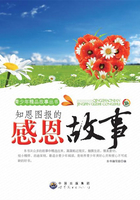It will be readily understood, from the rapid growth they make, that plants are, as a rule, gross feeders. Yet each plant takes up from the soil only that which is required for its own special needs-nothing more. From this earth-food it elaborates, by means of its leaves, its own special secretion. Hence it is that the sap of the one plant becomes a sweet, sugary juice; while that of another yields camphor; a third gives resin and turpentine; others india-rubber and gutta-percha. One of our recent lessons introduced a number of plants whose sap is elaborated into oily matter, and stored away in their fruit or seeds. We shall now proceed to study these vegetable secretions briefly, commencing with sugar, as perhaps the most important of all.
All the varieties of sugar known in commerce are called by one common name-cane-sugars. They do not all come from the sugar-cane, although that plant is still one of the chief sources of our sugar supply. Besides that obtained from the sugar-cane, there are other preparations known as beetroot sugar, and maple sugar, maize, and palm sugar. The common name, cane-sugar, is given to all of them,because in their properties they all resemble the sugar of the sugar-cane.
There are many varieties of the sugar-cane undercultivation in different parts of the world, each being peculiarly adapted to its own locality, climate, and soil. Originally a native of the Old World, it was introduced into America by the Spaniards in 1520. It is now extensively grown in the United States, Brazil, and the West Indies, as well as in India, and Mauritius, and the East Indies.
The plant itself is one of the grass family, and its cultivation is simple. The young plants are raised from cuttings, and not from seed, as the sugar-cane is rarely allowed to mature its flower,and so ripen its seeds. The plants take from twelve to fifteen months to reach their full growth. The stem is then a thick, stout, jointed cane, from 8 to 12 (and even in some varieties, 20) feet in height. The stems of most grasses are hollow; the sugar-cane is a solid stem.
The juice, which contains about 15 or
20 percent sugar, resides in the central pith of the stem.
As the canes ripen, the flowers begin to appear, and it is then time to cut them down, A sugar plantation, towards harvest time, with its yellow, striped, or purple-tintedstems, surmounted by immense bunches of feathery lilac and rose-colored flowers, presents a very beautiful and attractive sight, especially to one who looks on it for the first time.














